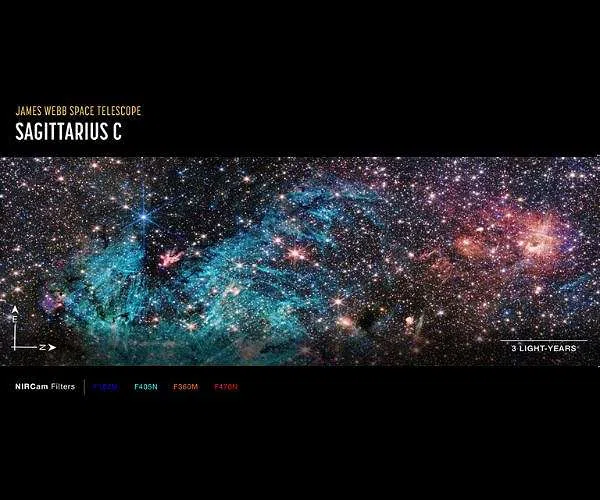CNN — The James Webb Space Telescope has looked into the heart of the Milky Way galaxy, unveiling new features and mysteries within the chaotic region that could help astronomers unravel more details about the early universe.
The space observatory’s ability to view the universe in infrared light, which is invisible to the human eye, captured never-before-seen details in the image, released by NASA on Monday.
Astronomers used Webb to glimpse Sagittarius C, or Sgr C, an active region of star formation located about 300 light-years from the galaxy’s central supermassive black hole Sagittarius A. A light-year, equivalent to 5.88 trillion miles, is how far a beam of light travels in one year.
“The galactic center is the most extreme environment in our Milky Way galaxy, where current theories of star formation can be put to their most rigorous test,” said Jonathan Tan, research professor of astronomy and one of Crowe’s advisers at the University of Virginia, in a statement.

Additionally, the observatory’s Near-Infrared Camera spotted ionized hydrogen emissions surrounding the stellar region’s lower edge, depicted in cyan in the image.
Astronomers are still trying to determine what has created the vast amount of energized gas, which surpasses what would normally be released by young massive stars. The observation team is also intrigued by structures that look like needles within the ionized hydrogen that are arrayed without any order.
“The galactic center is a crowded, tumultuous place. There are turbulent, magnetized gas clouds that are forming stars, which then impact the surrounding gas with their outflowing winds, jets, and radiation,” said Rubén Fedriani, coinvestigator of the project and a postdoctoral research fellow at the Instituto Astrofísica de Andalucía in Spain, in a statement. “Webb has provided us with a ton of data on this extreme environment, and we are just starting to dig into it.”








